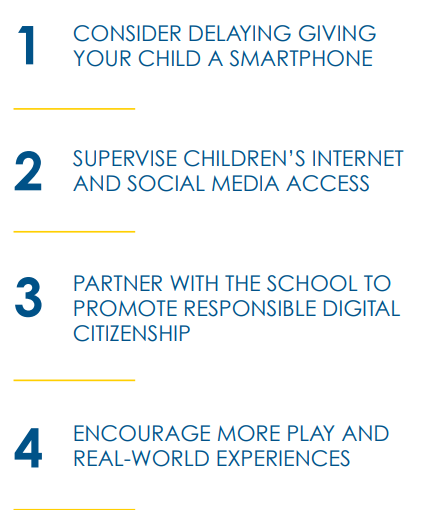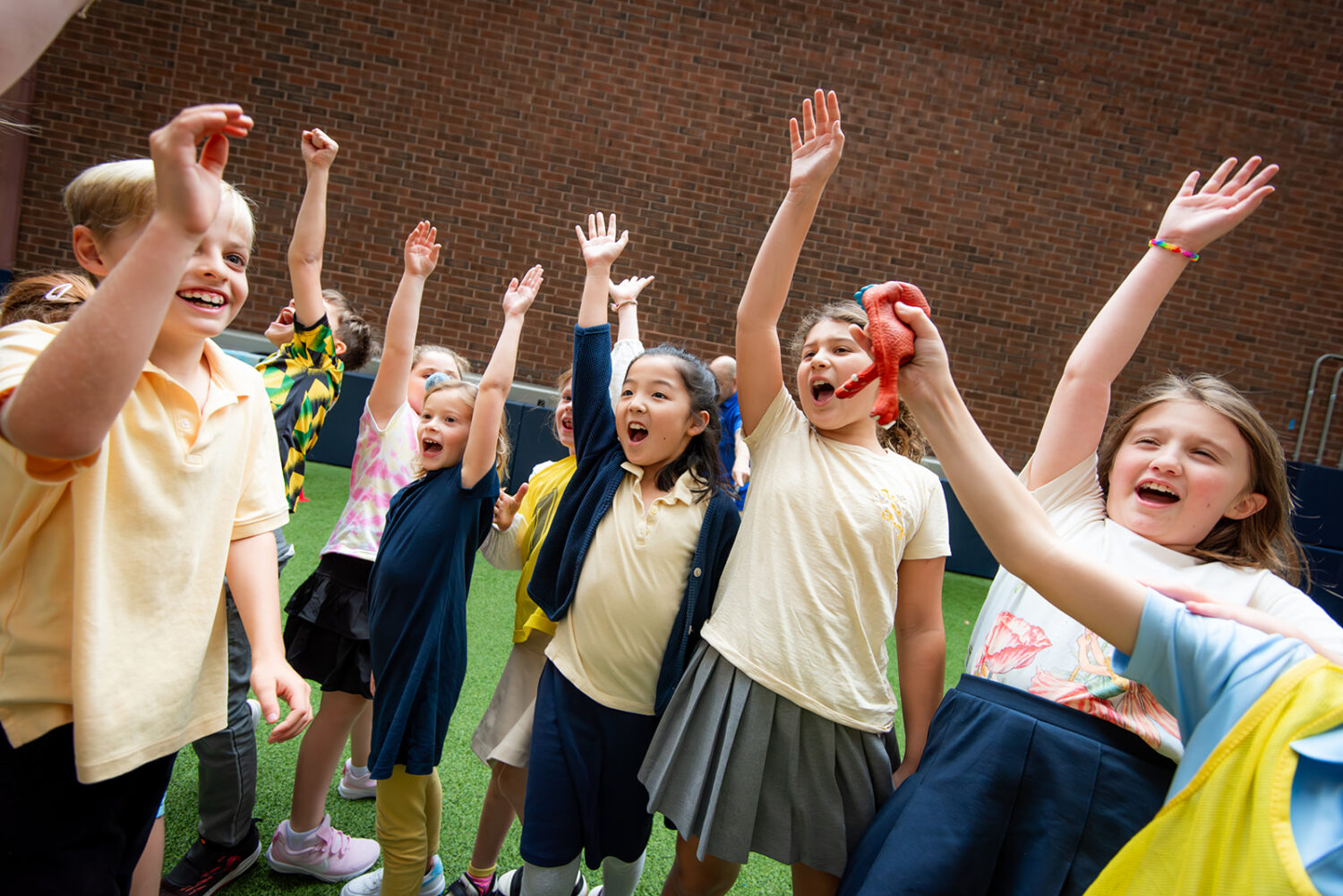Anyone who was a child in the 1980s likely remembers the idea of “stranger danger” being drilled into their
consciousness by well-meaning adults in their lives. It’s hard to overstate the extent of the nationwide panic
at this time, fueled by relentless—and overblown—media coverage of two high-profile kidnappings that occurred at the outset of the decade. Children during this era were often compelled to remain
close to home and cautioned to avoid interactions with strangers. New norms emerged; instead of, say,
turning their kids loose in the neighborhood on a summer morning, many parents began arranging
supervised playdates and tightly controlling their children’s social lives.
As these norms imprinted themselves on the next generation, they did not take into account the explosion of social media platforms in the 2010s, introducing the concept of digital lives. Children today can face the dichotomous experience of being overly protected from outside dangers but often, and largely, remaining vulnerable online. The effect has been dramatic, with multiple studies in recent years showing a decline in young people’s mental health correlating to the marked increase of time spent online and on social media.

Many Windward families have asked the School how they can support their children in this environment, and there are some basic guidelines that many experts agree may ameliorate some of the graver concerns around children’s declining mental health related to smartphones and social media use.
1 – CONSIDER DELAYING GIVING YOUR CHILD A SMARTPHONE
There are a host of reasons that many Silicon Valley technology executives delay giving their children smartphones until they are 14, and it bears consideration that developers of these technologies
protect their children from them until they become teens.
- Smartphones are designed to be addictive, and young children’s brains don’t have the capacity for impulse control around these devices. Particularly susceptible are children with ADHD, who may struggle to resist the constant, distracting stimulation of a smartphone.
- An ongoing multi-year study following 11,000 children by the National Institutes of Health released data confirming that children who spend more than two hours per day on screens scored lower on thinking and language tests.
- Smartphones impair both quantity and quality of sleep, which can cause numerous shorthand long-term health problems, including a weakened immune response, stunted growth, and mental health issues. Smartphones increase the risk for anxiety and depression, especially for girls between the ages of 10 and 14 years old.
2 – SUPERVISE CHILDREN’S INTERNET AND SOCIAL MEDIA ACCESS
In May 2023, U.S. Surgeon General Vivek Murthy published a youth mental health social media advisory citing multiple studies that emphasize the risk of harm to children and young adolescents who engage with social media. Although the minimum age for most platforms is 13, there are often minimal safeguards to verify a user’s age; one solution is for parents or guardians to implement parental controls on their child’s phone, which can limit the apps they are able to download. Many phones also have options within their settings menus to limit screen time on specific apps, or overall, on devices. Another recommendation, shared by Jennifer Miller MEd, founder of Confident Parents Confident Kids, is for parents/guardians to regularly check in with their children’s activities on social media: “I encourage parents to treat it like any another community. If your child joined the girl scouts, you would know the troop leaders. That community would be your community. We can help give our kids the skills to navigate these platforms themselves and create a safe environment where we’re talking about this community that we’re all part of,” she said.
Beginning as a grassroots movement in Austin, Texas in 2017, the Wait Until 8th pledge encourages families to delay giving their teen a smartphone until the end of eighth grade—and it has gained traction in recent years as parents have grappled with the documented negative effects of smartphones on developing brains. A
group of Windward families has expressed interest in this approach, and the data from other schools has shown that there is a positive effect when the social pressures for children to have a smartphone are lifted by parents supporting one another in this effort.
3 – PARTNER WITH THE SCHOOL TO PROMOTE RESPONSIBLE DIGITAL CITIZENSHIP
Eliminating cellphones in the classroom is one step of a multi-pronged approach by Windward to help students learn how to manage technology responsibly. Beginning in grade 1, Windward incorporates digital citizenship classes into its SEL curriculum. Students in grades 5 through 9 participate in weekly group guidance classes, including dedicated coursework on social media and cyber bullying, social media and safe interpersonal
communications, and responsible use of technology. The School also recently enacted a digital citizenship
code of conduct, a partnership agreement with families outlining a commonsense framework for students’ online activities to ensure they align with Windward’s core values. Key areas include safety and privacy (for example, encouraging students to seek help from a trusted adult if they are having uncomfortable digital interactions or are having difficulty controlling their own screen time); social responsibility (for example, committing to being kind online); and family agreement (partnering with the School to address any instances of cyberbullying, unkind, or unsafe behavior).
Families can further support the School’s efforts in developing responsible digital citizens by considering adopting a family media agreement at home. A family media agreement is an agreed family plan about how you, as a family, will deal with computers, smartphones, tablets, gaming consoles, e-readers and any electronic device. Director of Educational Technology Dr. Joan McGettigan explained, “Smartphone use should be guided by clear boundaries, open communication, and a focus on balance. By modeling healthy behavior and teaching digital responsibility, parents can help their
children navigate the digital world with confidence and care.”
4 – ENCOURAGE MORE PLAY AND REAL-WORLD EXPERIENCES
Smartphones essentially shift the focus of children’s daily lives from in-person interactions to their phones. Author Jonathan Haidt describes this shift as “the loss of childhood in the real world.” Many educators have noted that in recent years, hallways between classes—though as crowded as ever—have fallen silent, with students buried in their phones. However, that is not the case at Windward: Without phones in hand, students naturally gravitate toward face-to-face interactions, which, when combined with support from adults, foster deeper connections among peers.
In a multi-year study of 3,500 teens, Drs. Carrie James and Emily Weinstein documented teens referring to their phones as “digital pacifiers”: In social settings, they may pull out their phones to appear busy instead of awkward. Teens shared that what they really want in these moments is to connect with the other people in the room, but they don’t know how to begin. What parents and educators can do to support children in these moments is to embrace the idea of productive struggle. Experiencing awkward moments, while temporarily uncomfortable, leads to growth, especially when adults are standing by ready to help students navigate these social situations.
In fact, data has shown that reliance on screens can reduce a child’s capacity to build skills around emotional regulation. A study published in 2024 by JAMA Pediatrics followed 315 children from the ages of 3.5 to 5.5 years, examining a potential link between tablet use and how it contributes to expressions of anger and frustration. What the study found was that tablet use at age 3 was associated with more expressions of anger and frustration at the age of 4; a child’s proneness to anger and frustration at age 4 was then associated with more tablet use at the age of 5 years. Regulatory strategies are important, and adults can aid children in developing these strategies by creating a supportive environment that acknowledges and validates feelings of discomfort while encouraging children to work through these feelings productively.
Many children are also concerned about their own digital habits. One participant of the Drs. James and Weinstein study shared, “I don’t want to look back at my childhood and see I wasted it on a pointless game [on my phone].”
“I don’t want to look back at my childhood and see I wasted it on a pointless game [on my phone].”
Windward understands that prioritizing play and interpersonal interactions is a critical part of its program, and it gives students opportunities to connect with peers in the lunchroom and at recess. Similar to the School’s approach in other areas, this process is scaffolded; for example, faculty members present structured games
early in the school year and gradually offer less structure as time goes on, while providing support as needed.
As educators, parents, and guardians grapple with how to help the nation’s children navigate digital life, it becomes increasingly important to follow the data. And the data reveals that students need guidance around technology that reflects a nuanced approach. Smartphones and social media platforms are not going anywhere; what adults can do to help children is to frame their use of these technologies within the broader context of developing crucial life skills, such as emotional intelligence, resilience, compassion, and intentional
community-building. Children can develop these skills both online and offline, which will undoubtedly serve them well throughout their lives.









